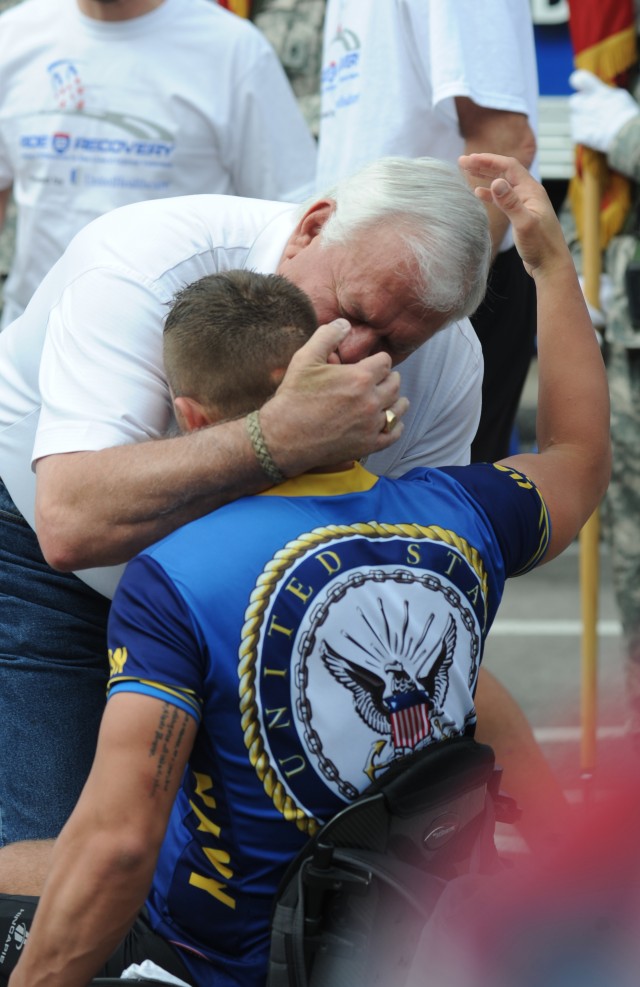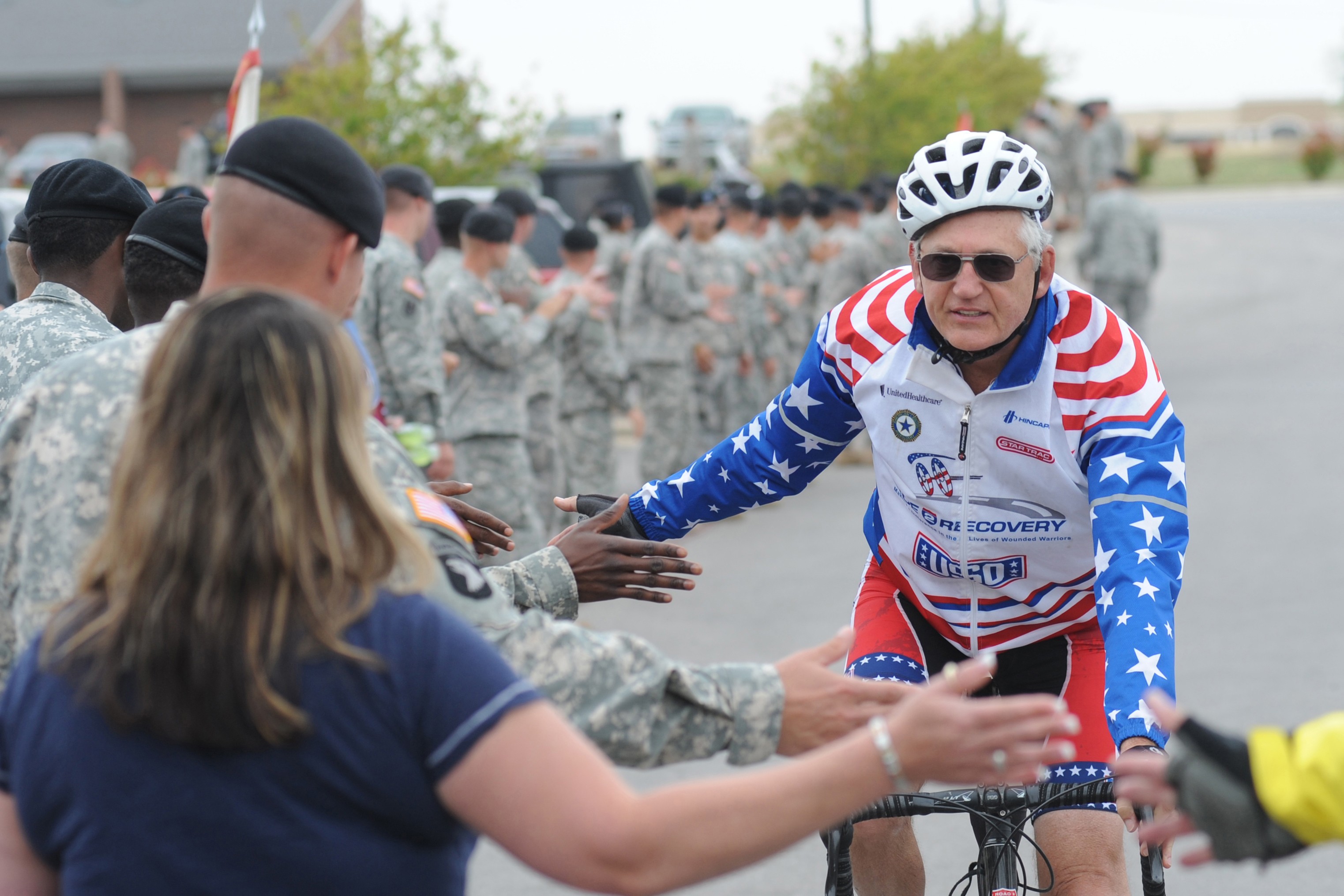FORT HOOD, Texas -- With the assistance of three Medal of Honor recipients, this year's Texas Challenge, one in the Ride 2 Recovery series, helped wounded warriors heal from the wounds of wars suffered in Vietnam, Desert Storm, Iraq and Afghanistan.
The approximately 230 riders passed through Fort Hood, Texas, March 31, en route to Arlington, Texas for a Major League Baseball game. They began their six-day, 350-mile journey March 28, at the Center for the Intrepid in San Antonio.
After a crowd of several hundred people had gathered near the flagpole outside the III Corps Headquarters, Lt. Gen. Bob Cone, III Corps and Fort Hood commanding general, praised the wounded warriors.
"To see this is awe-inspiring. Folks, the Ride Two Recovery is an amazing group," Cone said. "It represents what is best about our country, about the military and most important, the human spirit. Thanks for inspiring my Soldiers to do their best in every endeavor."
Three medal of honor recipients participated in the Texas Challenge, including Staff Sgt. Sal Giunta, the first living recipient of the nation' highest military award since Vietnam. Cone also acknowledged "Fort Hood's local hero," Staff Sgt. Patrick Zeigler.
Zeigler, who was severely wounded in the Nov. 5, 2009, shootings on Fort Hood, sat near the front of the column of riders, ready to pedal his way on a recumbent-trike from the flagpole to the front gate.
It was Zeigler's first ride since undergoing brain surgery March 4, after falling while on vacation with his wife, Jessica, in Reno, Nev.
After surviving another life-threatening experience, Zeigler said, "It feels great to be here with the whole group, especially everybody in the Texas Challenge. I wish I could have done the whole thing with them, but I'm not strong enough yet."
Of his determination to ride a short distance, Zeigler said, "Most of my strength comes from the love of my wife. She is my rock, and that's the reason I keep going."
The Ride 2 Recovery event helps to raise funds and awareness in support of rehabilitation of wounded warriors. Before arriving at Fort Hood, the riders completed a journey from Austin, with an overnight stay in Killeen, Texas, before attending Fort Hood's rally.
At Killeen, Mike Thornton, a Vietnam vet who was awarded the Medal of Honor in 1972, said, "Wounded warriors are not asking for special treatment because they're disabled. They're just asking to let me be part of this great nation again."
Another Vietnam veteran in attendance was Johnnie Alexander, who lost both legs in 1969 when he was hit by an incoming mortar round. Alexander said he is happy that his son, Sgt. Phillip Alexander, who is home after serving two tours in Iraq as a medic, is receiving better treatment than he did when he came home from war.
"So it's (public support) helping to heal wounds to bring the nation together, and it's helping to bring the different eras of warriors from Vietnam to Desert Storm and Iraq and Afghanistan together as a whole unit. We're a nation of people who, if we don't stand together and fight together, we're nothing," he said.
The Texas Challenge was the elder Alexander's first Ride 2 Recovery event.
"For me, it lets me know I can face anything I want," he said. In addition to the special trike, Alexander runs a 12.5-second 100-meter dash with help from two flexible, computerized legs.
Of the trike and his legs, he added, "It's great technology. Anybody can do anything they want to do if they have the will and desire to do it. With the technology, it's up to you."
Adaptive technology also has helped Navy Master at Arms 3rd Class Nathan DeWalt. The military policeman was paralyzed from the mid-chest down after a taxi cab driver pulled in front of his motorcycle.
Although he's relied upon a wheelchair to get around in the 2.5 years since the accident, DeWalt said "A wheelchair is just an obstacle you have to climb over. It's not something in my opinion that really changes the way you live."
Despite his injuries, he added, of the people he has met during the four Ride 2 Recovery rides in which he has participated, he was most impressed by Delvin McMillan, a quadruple amputee he rode with last year.
"It's just phenomenal to see people with no arms and no legs but prosthetics and be able to jump on a bike and complete the route," he emphasized. "For me, the biggest thing is coming here and being an inspiration for others. It's just the opportunity to help somebody else that drives me and keeps me coming back to these events."








Social Sharing